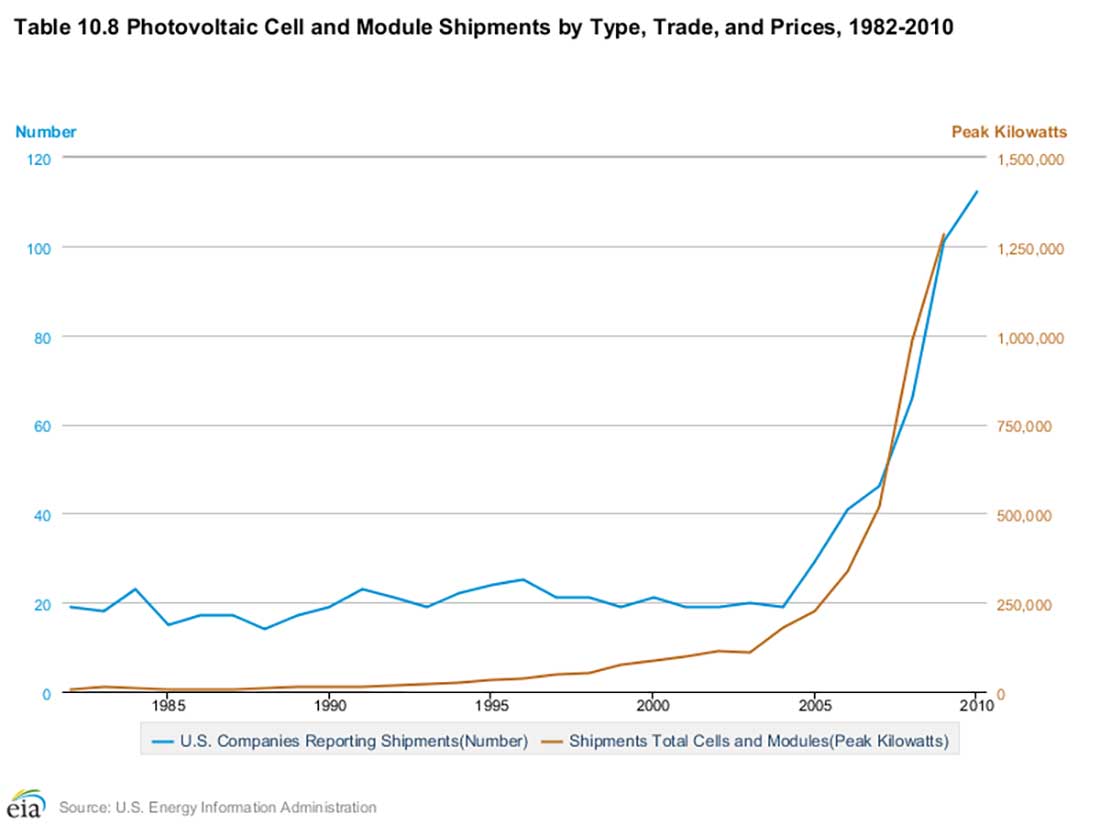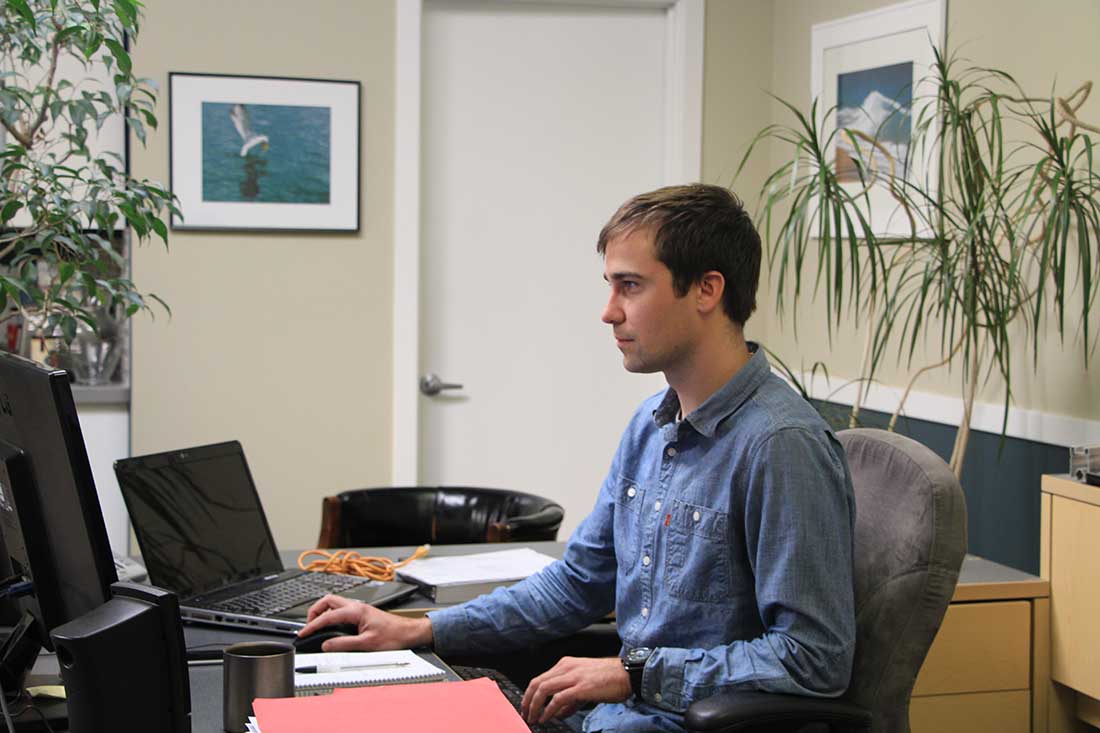By Urvashi Verma
The anticipated ending of the 30 percent Investment Tax Credit for solar power installations caused a record-breaking boom in the solar industry last year. Now that the credit has been extended until 2021 sales are expected to surge again as both electric utilities and consumers take advantage of the federal incentive before it expires.
“That was definitely one of the reasons we did it. We did not know how long it would last. At the time we thought it was ending in 2016. My husband and I wanted to make sure we got the 30 percent credit,” said Nicole Virgil, who installed a 7.1-kilowatt solar array on her house in Elmhurst, Ill., last year.
The U.S. solar market doubled its annual record last year, topping out at 14,625 MW of solar electric, or photovoltaic, panels installed, a 95 percent increase over the 7,493 MW installed in 2015.
“When we first started no one believed that solar would be suitable for the Midwest, but the economics have changed dramatically,” said Brandon Leavitt, who founded Solar Service Inc., in Niles, Ill., nearly 40 years ago.
What started with a first solar thermal installation in Leavitt’s parents home has led to a solar thermal heat and solar electric installation business with $3 million in yearly revenue and 14 full-time employees.
Now with a growing acceptance of solar power, Solar Service is booming.
Since its inception, Solar Service has installed more than 2 megawatts in solar electric systems and over 2,000 solar thermal systems; with installations ranging from single family homes to large scale commercial sites across Illinois including renovations for Northwestern University’s Kresge Hall.

The solar industry has been increasing at unprecedented rates. In 2017 the U.S. solar industry is expected to install more than 14 gigawatts, nearly double the amount installed in 2015, according to the Solar Energy Industries Association.
Fueling the fast growth for solar have been a number of federal and state incentives including the Solar Investment Tax Credit passed in 2006 that offers a 30 percent credit towards the total cost of installing solar panels for either heat or electricity in homes. This credit is available through the end of 2019; after that, it goes down each year and stops at the end of 2021.
“There is no limit on the amount of credit you can take. So regardless of how much you spend, you will be eligible for 30 percent,” said Leavitt.
The second incentive is net metering, which allows solar panel owners to sell excess electricity to their utility company at a retail rate and receive credit on their bill. The average retail price of electricity in Illinois is 12 cents per kilowatt-hour, about a penny less than the national average.
According to the U.S. Energy Information Administration, net-metered solar saw significant growth in 2015, adding over 2,100 megawatts in generation capacity. This represents the fourth consecutive year of annual growth above 50 percent.

Consumers of utilities have always been used to “renting” electricity, Leavitt said, but net metering has changed the mindset from renting to owning your own. This has been a strong motivator for customers to adopt solar, he said.
In addition to the federal tax benefit, many states offer rebates and cash incentives in order to meet renewable energy targets. These rebates can offset the cost of a solar installation by as much as 40 percent to 45 percent. Illinois does not offer these rebates.
Illinois residents can, however, receive cash payments from utility companies for the carbon-free energy from their solar panels called Solar Renewable Energy Credits or SRECs. Utility companies are required to meet the Renewable Portfolio Standards put in place by the state and can buy these credits directly from owners to help meet their requirements.
For example, a coal plant may buy SRECs as a way to offset the greenhouse gasses it emits. The price of SRECs in Illinois is expected to average $168 in 2016.

So let’s take a look at the numbers. The average U.S. household uses 11,000 kilowatt-hours of electricity per year, according to the federal Energy Information Administration. The average rate of electricity in Illinois is 12 cents per kilowatt-hour. Based on these numbers families in Illinois spend an average $1,320 per year on electricity. Installing a 5-kilowatt system will decrease the electric bill by about 50 percent to $660 per year, according to the Illinois Solar Energy Association.
A typical five-kilowatt solar system costs about $21,250. Within the first year, you would save close to $660 on your electric bill based on the estimate above. After applying the income tax credit, which in this case would be $6,375, and an additional $168 from SRECs, in the first year you would recover 33.8 percent of the total cost of installation, or $7,203.
Considering the expected increases in electricity prices due to variable rates plans and the EPA’s regulating the emissions of CO2 from power plants, electricity solar panel owners could save much more in the coming years, Leavitt said.
With so many benefits for solar electric installation, it’s no wonder that Solar Service’s business has shifted to solar electric panels from solar thermal heat.

“Eighty to 90 percent of the business we do today is in solar electric. I don’t think [Leavitt] expected when he hired me 10 years ago that there was going to be such a dramatic shift, said Garrison Riegel, who designs the company’s solar electric systems.
The cost of per watt of solar panels has declined dramatically. Today, the price per watt is between $3 to $4 compared with $76 in 1977 when Leavitt first started his company. The per watt cost of solar electric systems has gone down sharply due to competitive market forces that have yielded lower solar module prices and greater efficiency of solar panels and equipment.
But that doesn’t seem to concern Leavitt in the least. “It doesn’t bother me that the prices have decreased because the number of projects I do today has increased so much more,” said Leavitt. “It gives me the chance to hire more people and get more solar out into the marketplace. It’s definitely a win-win for consumers, small businesses and clean energy,” he said.
“The installation process is pretty quick and easy,” said Erik Carlberg, who handles the permitting for Solar Service, “between one to three days depending on the scale of the project. But getting approval from the municipalities and permits approved can take up to six to eight weeks.” Both the installers and city or municipality conduct pre- and post-installation inspections to make sure that everything is up to code, added Carlberg.
Solar Service currently has more than 40 projects in its pipeline. Leavitt says he expects to hire more people if business continues at this rate.



